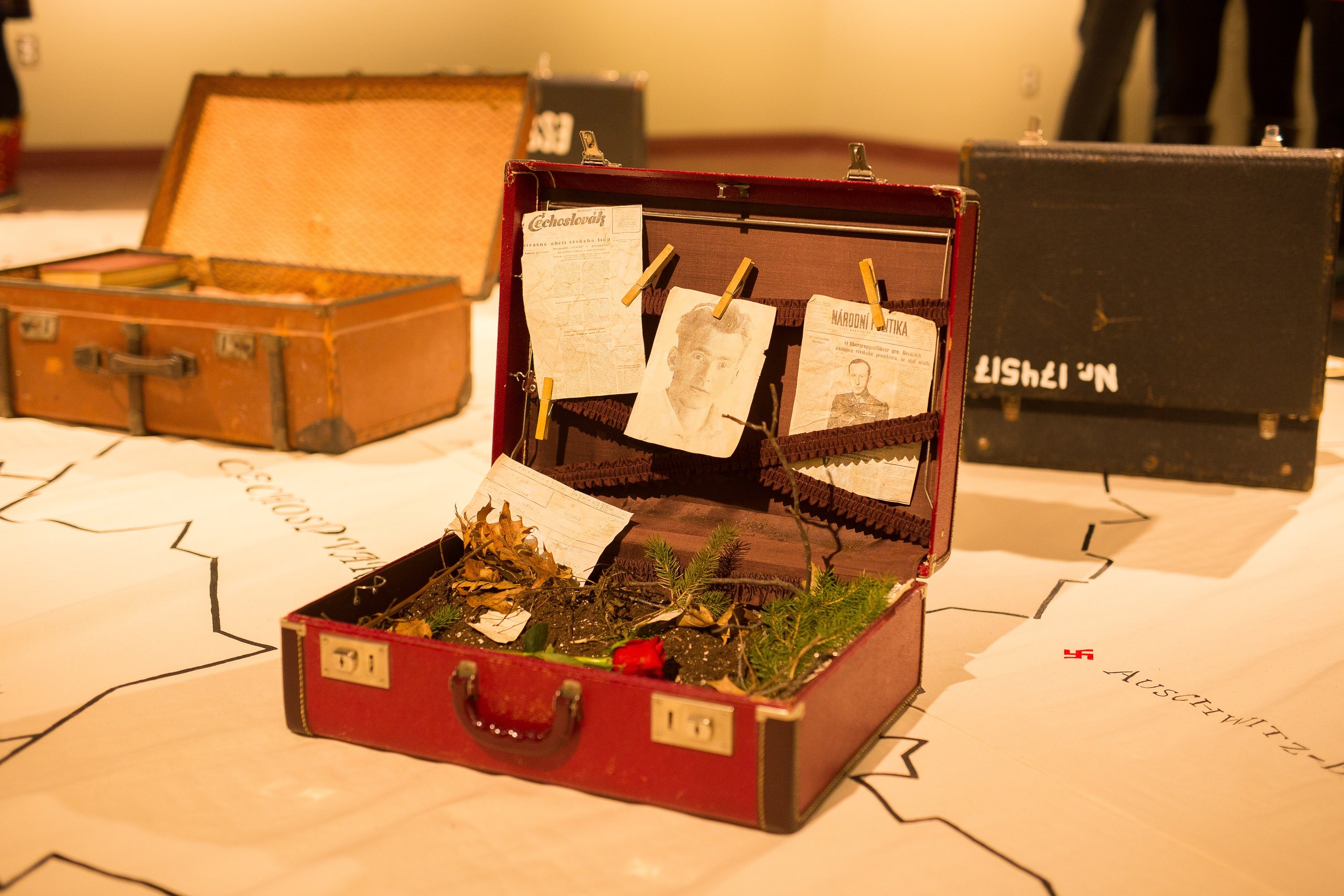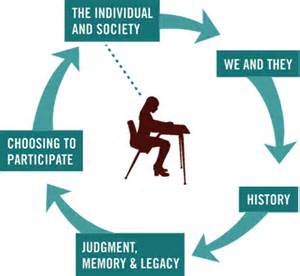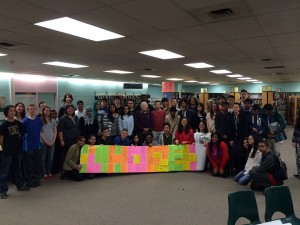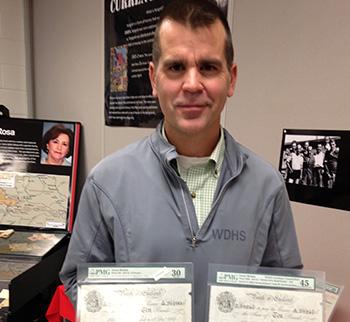If you have ever travelled to Brantford Ontario Canada, you might have been excited to visit the home of Alexander Graham Bell to learn about the invention of the telephone. You might have come for a hockey tournament and had the privilege of meeting Hockey Legend Wayne Gretzky’s father Walter, who loves hanging out at the rinks. You may have picked up brochures with beautiful pictures of the Grand River or did research about Joseph Brant, who was the negotiator between the Mohawk and British during the American Revolution. But you might not know that Brantford is the home of the first residential school in Canada; that the building still stands with the names of children carved into the bricks and that it is one of the few residential school buildings still standing in Canada.
Honouring Reciprocity and Survivors of Canada’s Residential Schools
Posted by Lorrie Gallant on February 24, 2020
Topics: Art, Survivor Testimony, Residential Schools, Indigenous History, Culturally Responsive and Relevant Pedagogy, Indigenous, Lesson Ideas, Facing Canada, Creative, Woodland Cultural Centre
Remembering Missing and Murdered Indigenous Women, Girls and Two-Spirited People on October 4th
Posted by Paul Sabyan on October 5, 2019
For the past few years, my school community school community at St. Joseph’s College School in downtown Toronto has recognized October the 4th as a day to honour the Missing and Murdered Indigenous Women, Girls and Two-Spirited People. Since 2017, our school community has worked collectively to use art and activism to spread awareness around this day in hopes of creating change. This is an important issue to us; being a school for girls and young women, gendered violence resonates particularly with our student population.
Topics: Art, Choosing to Participate, Indigenous, student activism, mmiwg
A Mindful Classroom: Establishing a Safe Space for Sensitive Topics
Posted by Heidi Crowley on March 26, 2019
A Mindful Classroom: Establishing A Safe Space for Sensitive Topics
Many of us have seen the importance of mindfulness in our classrooms and personal lives. Being present and aware are integral to truly absorbing what is around you. How mindful are we of exactly what is around us in the classroom? The physical space we build for our students is often an afterthought to efficiency and more intangible metrics of behaviour and dynamics. This year, I made it my goal to be mindful of the materials within my classroom and how well they represent the values I hope we exercise within these walls.
Topics: Art, Student Work, Indigenous History, Social and Emotional Learning, Middle School, Culturally Responsive and Relevant Pedagogy, facing history pedagogy, Treaty, Facing Canada, cross curricular teaching and learning
Beyond Anne Frank: Using an arts-integrated approach to explore victim experiences during the Holocaust
Posted by Michael Pitblado on March 24, 2017
The students in my Genocide and Crimes Against Humanity course gained new and meaningful perspectives on what life was like for those targeted for extermination by the Nazi regime by creating a unique and innovative art exhibition that explored the lives of young victims of the Holocaust.
Topics: Art, Identity, Holocaust, Salvaged Pages, Genocide and Crimes Against Humanities Course, Inside a Genocide Classroom, Anne Frank
When I graduated from teacher’s college, my goal was to teach high school music and history. I wanted to have discussions about the people and choices that shape society, the injustices of the past, and the levers that we have to create change. I spent a year supplying, and then in 2014/2015 I was got a position - much to my surprise - in a grade one classroom, and the following year, in a grade five/six split classroom.
Topics: Art, Books, Indigenous, LGBTQ
Humans of the Woodlands: Choosing to Participate through Blogging and Photography
Posted by Alysha Groff on April 21, 2016
Each year, like all educators, I think about new culminating activities that are meaningful and engaging. Inspired by Humans of New York on Facebook, I thought this concept would fit well into my Grade 11 Genocide and Crimes against Humanity course. In fact, the more posts I read, the more I realized how closely aligned they are to Facing History’s Scope and Sequence.
Topics: Art, Choosing to Participate, Identity, Culturally Responsive and Relevant Pedagogy, reflection
Youth and Teachers Respond Collectively to Art Spiegelman's Maus Through Art and Inquiry: An Interview with Professor Rob Simon and Delta Senior Alternative School Teacher Sarah Evis
Posted by Rob Simon on December 21, 2015
In 2015, Dr. Rob Simon, Associate Professor at the Ontario Institute for Studies in Education of the University of Toronto (OISE), and students from his teacher education course partnered with Sarah Evis, a teacher from Delta Senior Alternative School in the Toronto District School Board (TDSB), and her grade 8 students, to study Art Spiegelman’s popular intergenerational Holocaust survivor memoir and graphic novel, Maus: A Survivor’s Tale.
Topics: Art, Books, Antisemitism, Choosing to Participate, Holocaust, Facing History and Ourselves, Innovative Classrooms, Holocaust Education, Middle School, Strategies, Culturally Responsive and Relevant Pedagogy, Night, genocide, Lesson Ideas, big paper, Inside a Genocide Classroom, Social Justice, Personal history
Valerie Simmons was born in London, England in 1921. She has been writing poetry since she was six years old. At the beginning of WWII she worked in a first aid post dealing with Blitz casualties. When the Battle of Britain ended she joined the Women’s Air Force (WAF) where she was an admin officer throughout England and in Egypt. After the war she earned a BA from London University and went on to get her teaching qualifications. She has taught and worked in libraries.
Topics: Art, Choosing to Participate, Events, Identity, Facing History and Ourselves, Canada, Memorial, current events, legacy, Remembrance Day, English Classroom, Personal history
Remembrance Day is a poignant moment to reflect upon the sacrifice that men and women made before us. As we get farther away from the world wars of the past, how do we as educators ensure that this day is meaningful for our students?
Topics: Art, Antisemitism, Choosing to Participate, Facing History Resources, Identity, Holocaust, Facing History and Ourselves, Canada, Holocaust Education, Lesson Ideas
This week is #MuseumWeek, where museums from around the world will be convening with museum lovers on twitter to journey behind the scenes, to explore the grounds, and to share ideas about what we choose to remember for the future.
Topics: Art, Facing History Resources, History, Innovative Classrooms, Museum Studies







